St Andrew is perhaps everyone's idea of what an East Anglian church should be - a fine tower and spire, flint walls with battlements, and inside, heavy oak doors, massive roof timbers and intricate carving on the furnishings. All such details are well worth a look; they were well designed, and they are little altered handiwork of their age. The more you look, the more obvious it becomes that this is a complicated building; bits and pieces have been added for 750 years, making up a whole which is still developing.
In general, Much Hadham’s is typical of the Hertfordshire churches - it has, for instance, a "Hertfordshire spike", the lead-covered spire built on the top of the tower. But it is unusually large, 121 ft long, with a nave and two big aisles, which makes it seem more like a town church (such as Bishop’s Stortford, Ware or Hitchin) than a village one. The explanation is that the land around belonged to the Bishops of London, they built one of their official residences here and wanted a grander church.
The church was vandalised by Hertfordshire’s own Dowsing, John Skingle, during the Commonwealth when it lost most of its glass.
Unusually most of my favourite bits are modern (obviously not all):
The west window of the Tree of Life, dedicated in 1995, marks 10 years of the St Andrew and Holy Cross (Catholic) congregations sharing this church. Designed in 1979 by Henry Moore for an east window in the new church the Roman Catholics then planned. This stained-glass interpretation was made by Patrick and John Reyntiens
The Arts and Crafts steel light fittings in the nave, made to an excellent design by Sir Albert Richardson, which were given in memory of Lady Florence Norman of Moor Place in 1936.
The heads of a king and queen (1953) by Henry Moore, who lived in the parish from 1947 until 1986, inserted as label stops beside the west door of the tower; east of the chancel the cross to Frederick Norman (died 1916) with a Crucifixion figure by Henry Wilson, President of the Arts and Crafts Society who also designed the war memorial in the village.
ST ANDREW. Quite a large church, all embattled, and one of complicated history. A C12 church can be surmised but has left no visible traces. About 1220 the chancel was re-built (blocked N lancet window). About the middle of the century a S aisle was added to an older nave, three bays long, with octagonal piers, plain moulded capitals, and double-chamfered arches. As building went on to the W taste changed and the last bays have slightly more complex capitals and arches. The N aisle is of two dates. Its E bay, wider than the others and probably originally opening into a Norman transept, is late C13, the other bays are early C14 (see the capitals of the octagonal piers, and the arch mouldings). The arches are sparsely studded with fleurons. Amongst the S aisle windows one original one is in the Dec style. The same style appears in the S aisle Piscina. The W tower followed under the aegis of Bishop Braybrooke of London (1382-1404). It is of three stages, embattled and has a tall spike. The buttresses are diagonal, the W window is tall. The tower arch has an interesting moulding. The C15 added the S porch, inserted the big five-light E window with panel tracery in two tiers and several other windows, and put in new roofs. They all survive and are worth study. The nave wallposts rest on figures, the nave and chancel tie-beams are a little decorated on their undersides, the nave braces carry tracery, etc. - SCREEN. C15 with ‘panel’ tracery. - CHANCEL STALLS. With panelled back walls and poppyheads. - DOOR to N vestry. With big C13 ironwork. - CHAIRS. Two big chairs of c. 1400; of uncommon interest. - PAINTING. On the N wall remains of ornamental Early Tudor wall painting. - TILES. A few C14 tiles inside the N chancel recess. - STAINED GLASS. In the head of the E window, unfortunately too high to be seen properly, two figures of male saints and a row of female saints, C15, apparently well preserved. - E window by Burlison & Grylls, c. 1875-80. - S aisle last window from W designed by Selwyn Image and executed 1891. - PLATE. Two Chalices and a small Paten of 1576; Paten of 1811. - MONUMENTS. Brass with demi-figure of a man, C15 (chancel floor). - Brasses to a man and woman, c. 1500; to Clement Newce d.1519, wife and children; and to William Newce d. 1610, wife and children (nave E end). - Epitaph to Judith Aylmer d. 1618, wife of the Bishop of London, with the usual kneeling figure. - Joane Goldsmith d. 1569 (nave E end). - Dionis Burton d. 1616 (next to the Goldsmith brass).
ST ANDREW. Quite a large church, all embattled, and one of complicated history. A C12 church can be surmised but has left no visible traces. About 1220 the chancel was re-built (blocked N lancet window). About the middle of the century a S aisle was added to an older nave, three bays long, with octagonal piers, plain moulded capitals, and double-chamfered arches. As building went on to the W taste changed and the last bays have slightly more complex capitals and arches. The N aisle is of two dates. Its E bay, wider than the others and probably originally opening into a Norman transept, is late C13, the other bays are early C14 (see the capitals of the octagonal piers, and the arch mouldings). The arches are sparsely studded with fleurons. Amongst the S aisle windows one original one is in the Dec style. The same style appears in the S aisle Piscina. The W tower followed under the aegis of Bishop Braybrooke of London (1382-1404). It is of three stages, embattled and has a tall spike. The buttresses are diagonal, the W window is tall. The tower arch has an interesting moulding. The C15 added the S porch, inserted the big five-light E window with panel tracery in two tiers and several other windows, and put in new roofs. They all survive and are worth study. The nave wallposts rest on figures, the nave and chancel tie-beams are a little decorated on their undersides, the nave braces carry tracery, etc. - SCREEN. C15 with ‘panel’ tracery. - CHANCEL STALLS. With panelled back walls and poppyheads. - DOOR to N vestry. With big C13 ironwork. - CHAIRS. Two big chairs of c. 1400; of uncommon interest. - PAINTING. On the N wall remains of ornamental Early Tudor wall painting. - TILES. A few C14 tiles inside the N chancel recess. - STAINED GLASS. In the head of the E window, unfortunately too high to be seen properly, two figures of male saints and a row of female saints, C15, apparently well preserved. - E window by Burlison & Grylls, c. 1875-80. - S aisle last window from W designed by Selwyn Image and executed 1891. - PLATE. Two Chalices and a small Paten of 1576; Paten of 1811. - MONUMENTS. Brass with demi-figure of a man, C15 (chancel floor). - Brasses to a man and woman, c. 1500; to Clement Newce d.1519, wife and children; and to William Newce d. 1610, wife and children (nave E end). - Epitaph to Judith Aylmer d. 1618, wife of the Bishop of London, with the usual kneeling figure. - Joane Goldsmith d. 1569 (nave E end). - Dionis Burton d. 1616 (next to the Goldsmith brass).
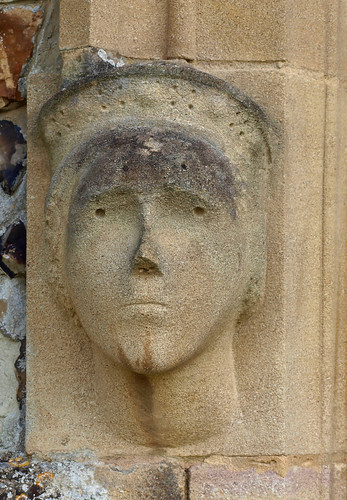
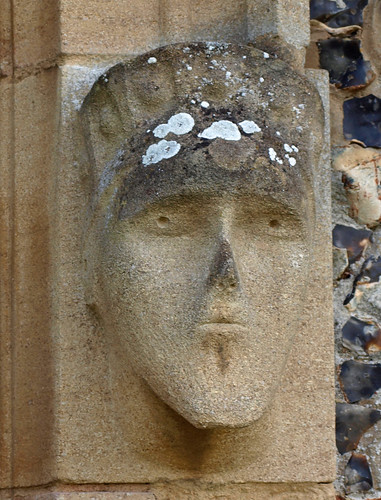
Much Hadham. Just where the River Ash bends round Bush Hill is a farmhouse of such dignity that we should guess it had a history; and so it has. It is the Palace, the country home of the Bishops of London for 800 years, and here began our Tudor dynasty,for Henry V’s widow (Shakespeare’s Katharine) gave birth in this farmhouse to Edmund Tudor, whose son Harry won the throne on Bosworth Field. The building has changed since then. Today it is mainly 16th century, with an outer casing of 17th-century brick and later wings. A floor cuts in half the fine old hall with its gabled windows and mighty oak girders, but there is an elegant staircase, and 17th-century panelling.
Giant survivors from the bishop’s avenue of trees lead to the road, and another avenue of mighty limes leads to the ancient yew, sturdy sentinel by the spacious church, which has been growing since the 12th century. Nothing is here of the Normans, and it is 13th century masons who have left their mark; we see it on almost every chalk stone at the end of the south arcade as clearly as if it had been scratched yesterday. The chancel was rebuilt about 1 220. The north aisle with its grand arcade was added about 1300, and at the end of that century Bishop Braybrooke built the massive tower and set his arms over the door.
Bearing up the 600-year-old roof of the nave are stone carvings of a sceptred king, a recumbent knight, a lady with a distaff, and the four Evangelists. The capitals and arches of the superb north arcade are rich in carvings of flowers and heads of lions and of men. The 15th century added carvings in wood to that in stone. The lions in the roof, the rood screen of elaborate tracery, the choir stalls with their misericords, the chancel panelling and some panels in the pulpit, two high-backed chairs, and some of the nave seats, are all of that time. The altar table is Elizabethan. Round the 15th century Easter Sepulchre are patterned tiles 600 years old, and the old vestry door has ornamental ironwork a century older. Some glass in the east window has wonderfully survived 500 years; it shows Peter and Andrew with a row of saintly women.
A wife of one of the bishops, Judith Aylmer of 1618, is here in stone, but without her head. Among the portraits in brass are a serjeant-at-law who died about 1420, an Elizabethan mercer called Clement Newce with his wife and 17 children, and William Newce (who died in 1612) with his two wives and 13 children. One brass tells us of Simon Flambard who heard the news of Bannockburn when he was parson here, and another asks us in French to pray for the soul of a later 14th-century parson. A more famous rector was Alexander Nowell, the Dean of St Pauls who wrote the Catechism. Elizabeth I thought highly of his learning, but that did not prevent her rating him soundly for presenting to her a prayer book with pictures of saints and martyrs, and once when he was preaching she called out "To your text, Mr Dean. Leave that; we have heard enough of that," so disconcerting the poor man that he was unable to finish his sermon.
The rectory is a little later than his day, a Jacobean house of brick-and-plastered timber. Several other old houses with over-hanging storeys give great charm to the village, and there is an inn with a secret passage behind its panelling.
Flickr set.
Flickr set.
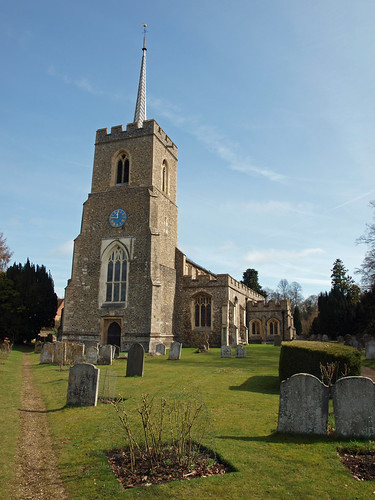

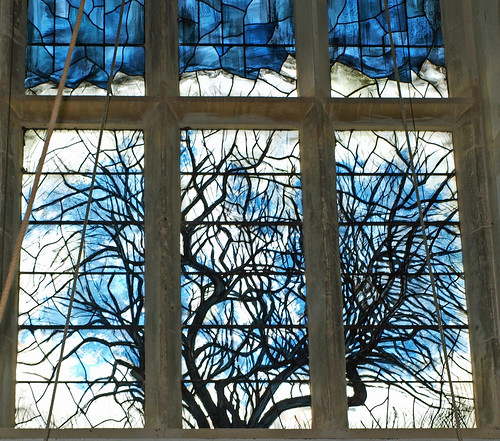

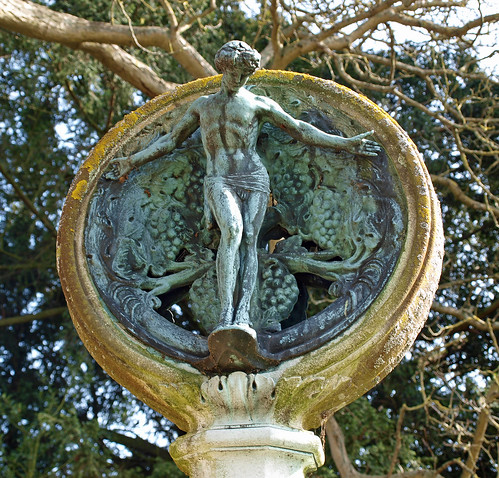
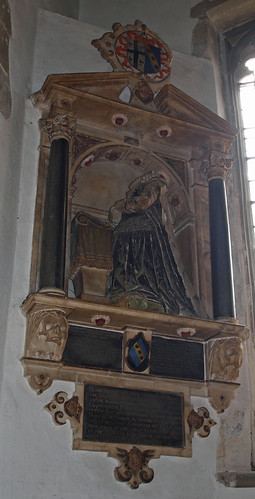
No comments:
Post a Comment